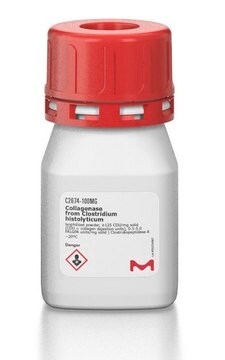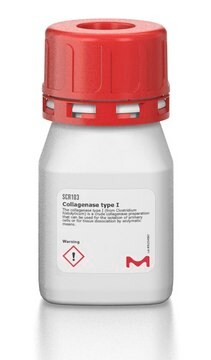Wichtige Dokumente
D1306
Debrisoquine sulfate
powder, ≥98% (TLC)
Synonym(e):
3,4-Dihydro-2(1H)-isoquinolinecarboximidamide, Debrisoquin sulfate, Ro 5-33071
About This Item
Empfohlene Produkte
Produktbezeichnung
Debrisoquine sulfate,
Assay
≥98% (TLC)
Qualitätsniveau
Form
powder
mp (Schmelzpunkt)
285 °C
Löslichkeit
H2O: 20 mg/mL (with heat)
Lagertemp.
room temp
SMILES String
OS(O)(=O)=O.NC(=N)N1CCc2ccccc2C1.NC(=N)N3CCc4ccccc4C3
InChI
1S/2C10H13N3.H2O4S/c2*11-10(12)13-6-5-8-3-1-2-4-9(8)7-13;1-5(2,3)4/h2*1-4H,5-7H2,(H3,11,12);(H2,1,2,3,4)
InChIKey
CAYGYVYWRIHZCQ-UHFFFAOYSA-N
Angaben zum Gen
human ... SLC6A2(6530)
Suchen Sie nach ähnlichen Produkten? Aufrufen Leitfaden zum Produktvergleich
Biochem./physiol. Wirkung
Substrate
Signalwort
Warning
H-Sätze
P-Sätze
Gefahreneinstufungen
Acute Tox. 4 Oral
Lagerklassenschlüssel
11 - Combustible Solids
WGK
WGK 3
Flammpunkt (°F)
Not applicable
Flammpunkt (°C)
Not applicable
Persönliche Schutzausrüstung
dust mask type N95 (US), Eyeshields, Gloves
Hier finden Sie alle aktuellen Versionen:
Besitzen Sie dieses Produkt bereits?
In der Dokumentenbibliothek finden Sie die Dokumentation zu den Produkten, die Sie kürzlich erworben haben.
Artikel
Phase I biotransformation reactions introduce or expose functional groups on the drug with the goal of increasing the polarity of the compound. Although Phase I drug metabolism occurs in most tissues, the primary and first pass site of metabolism occurs during hepatic circulation.
Unser Team von Wissenschaftlern verfügt über Erfahrung in allen Forschungsbereichen einschließlich Life Science, Materialwissenschaften, chemischer Synthese, Chromatographie, Analytik und vielen mehr..
Setzen Sie sich mit dem technischen Dienst in Verbindung.






